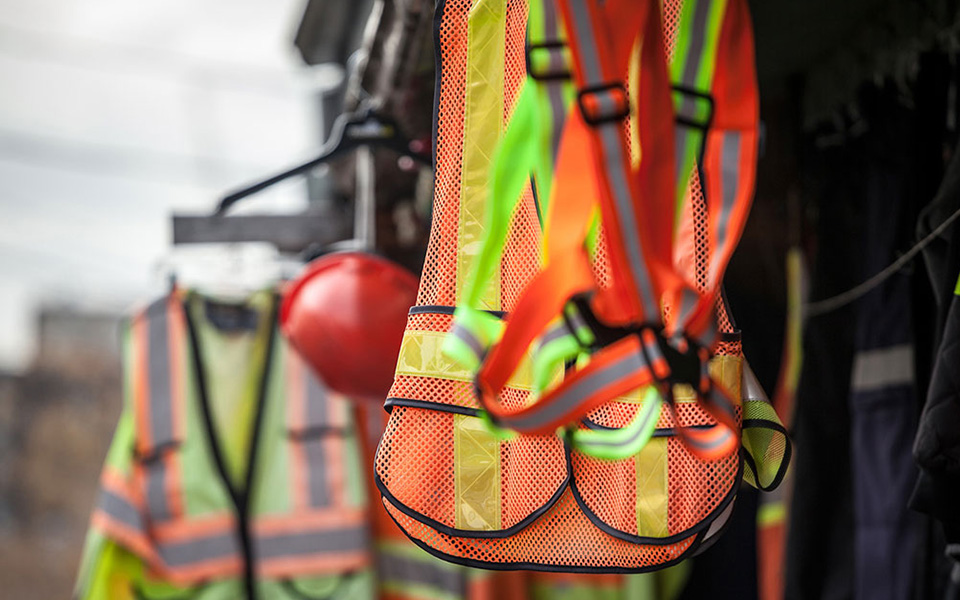Each year, around 5,000 workers lose their lives due to preventable workplace accidents. Startlingly, over half of these fatalities come from employees in the construction, extraction and transportation industries. Fortunately, employers can avoid many of the hazards that lead to such tragedies by implementing OSHA’s safety guidelines. If you want to prevent accidents and keep your team members safe, it’s important to understand the most common construction hazards and follow vital safety tips.
What Are the OSHA Fatal Four?
OSHA developed its Focus/Fatal Four Program to create awareness of the top hazards for employees. The construction industry, despite continued improvements in safety procedures and oversight, remains one of the deadliest sectors in the U.S. The U.S. Bureau of Labor Statistics reports that 60% of construction worker deaths are attributed to the Occupational Safety and Health Administration’s (OSHA) Fatal Four Hazards:
Fall Hazards
Falls are consistently a primary cause of construction fatalities. Improperly positioned ladders, unstable working surfaces and misuse use of fall protection can cause falls and falling objects. If the sides and edges, floor holes and wall openings are not safeguarded, workers can risk falling or being hit by falling objects. Workers must use protective equipment when stationed at a height of 6 feet or more on the construction site.
Struck-by Hazards
These dangers are present when a worker can suffer an injury by forcible contact or impact with an object or piece of equipment. Without proper prevention tactics, struck-by hazards can lead to severe and potentially fatal injuries. According to the Bureau of Labor Statistics, one out of every six workplace deaths are from struck-by accidents. Common struck-by hazards in the construction sector include:
- Flying objects (e.g., a nail)
- Falling items, such as a power tool knocked off a scaffold
- Earthmoving equipment
- Swinging objects (e.g., crane load)
Caught-In or Caught-Between Hazards
These threats occur when a worker is squeezed, caught, crushed, pinched or compressed between two or more objects or parts of an object. According to OSHA, 16% of construction deaths are from these preventable hazards. Excavation workers are twice as like to be killed due to the threat of cave-ins and other forms of caught-in/caught-between hazards. Common incidents on the job site include:
- Caught in a trench collapse
- Contact with unguarded equipment (e.g., saw blade)
- Pinched between a crane turning and a fixed wall
- Pinned between moving equipment and a wall or other equipment
Electrocution Hazards
Nearly 10% of the workforce has suffered fatalities resulting from electrocution, which can occur due to multiple hazards present on construction job sites. Potential electrocution events can occur from contact with overhead power lines, energized conductors or circuit components, extension cords and power tools neglect as well as lightning.
Common injuries and accidents associated with electricity include:
- Burns
- Electrocutions
- Electric shock
- Falls
- Arc flashes and blasts
Safety Tips to Avoid OSHA’s Fatal Four
Fall Prevention Tactics
- Mandate and provide employees with fall arrest equipment
- Install and maintain perimeter protection
- Secure and label all floor openings and covers
- Safely utilize ladders and scaffolds
- Verify each job uses appropriate equipment
- Provide employees with proper equipment training
Obstruct Potential Struck-By Incidents
- Never position workers between moving and fixed objects
- Provide and mandate high-visibility clothing to identify workers easily
- Employ positive barriers between workers and traffic
- Inspect all tools and equipment
- Make appropriate protective gear available (safety glasses, hardhat, face shields, etc.)
- Encourage equipment certifications
Avoid Caught-In/Caught-Between Hazards
- Refuse access to any unprotected trench or excavation (five feet or deeper) without an adequate protective system
- Ensure trenching or excavation is protected by sloping, shoring, benching or a trench-shield system
- Perform a site analysis for potential hazards
Hinder the Risk of Electrocution
- Locate/identify utilities daily
- Recognize overhead power lines when operating any equipment
- Maintain and enforce local safety distance from power lines
- Ensure all portable electric tools must be grounded or double insulated
- Use protective ground-fault circuit interrupters
- Be alert to electrical hazards near ladders, scaffolds or other platforms
We’re Here to Help Your Construction Company Avoid OSHA’s Fatal Four
As an employer, it’s your responsibility to prioritize employee safety with hazard-free work sites that comply with OSHA standards. To gain valuable safety recommendations and review your insurance coverage, connect with a CBIZ construction risk manager who can provide expert insight and ensure you have the coverage you need.
© Copyright CBIZ, Inc. All rights reserved. Use of the material contained herein without the express written consent of the firms is prohibited by law. This publication is distributed with the understanding that CBIZ is not rendering legal, accounting or other professional advice. The reader is advised to contact a tax professional prior to taking any action based upon this information. CBIZ assumes no liability whatsoever in connection with the use of this information and assumes no obligation to inform the reader of any changes in tax laws or other factors that could affect the information contained herein. Material contained in this publication is informational and promotional in nature and not intended to be specific financial, tax or consulting advice. Readers are advised to seek professional consultation regarding circumstances affecting their organization.
“CBIZ” is the brand name under which CBIZ CPAs P.C. and CBIZ, Inc. and its subsidiaries, including CBIZ Advisors, LLC, provide professional services. CBIZ CPAs P.C. and CBIZ, Inc. (and its subsidiaries) practice as an alternative practice structure in accordance with the AICPA Code of Professional Conduct and applicable law, regulations, and professional standards. CBIZ CPAs P.C. is a licensed independent CPA firm that provides attest services to its clients. CBIZ, Inc. and its subsidiary entities provide tax, advisory, and consulting services to their clients. CBIZ, Inc. and its subsidiary entities are not licensed CPA firms and, therefore, cannot provide attest services.















